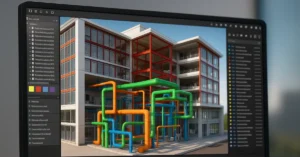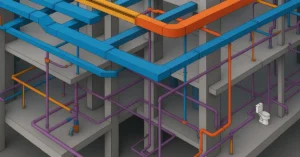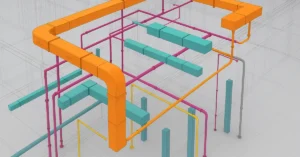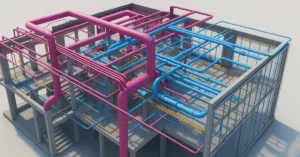Explore Brutalist Buildings in Sheffield
Sheffield, once known primarily for its industrial prowess and steel production, has quietly built an impressive collection of Brutalist architecture that tells a powerful story of post-war regeneration. While some view these buildings as eyesores, others see them as vital components of the city’s identity and history. Brutalism in Sheffield reflects a period of rapid urban development, an embrace of modernism, and a desire to redefine public space. This article takes you on a deep dive into Sheffield’s most iconic Brutalist buildings and the broader architectural narrative they represent.
What is Brutalism and Why Did It Take Root in Sheffield?
Brutalism emerged in the mid-20th century as a raw, expressive architectural style characterized by rough concrete, rigid geometry, and a focus on functionality. In Sheffield, the aftermath of World War II left parts of the city in need of reconstruction. The local government turned to Brutalism as a cost-effective solution for building new housing, institutions, and public spaces. These buildings were seen as symbols of progress—pragmatic yet radical.
Sheffield’s Most Iconic Brutalist Buildings
1. Park Hill Flats
Location: Duke Street, Sheffield S2 5RQ
Architects: Jack Lynn and Ivor Smith (Sheffield City Council)
Year: 1961
Perhaps the most famous Brutalist building in Sheffield, Park Hill Flats represents a bold experiment in social housing. With its massive concrete framework and interconnected “streets in the sky,” Park Hill was inspired by Le Corbusier’s Unité d’Habitation. It originally housed over 3,000 people and was designed to maintain community links by rehousing neighbors close to each other. Despite falling into disrepair in the late 20th century, the structure is undergoing regeneration, blending Brutalist heritage with modern living spaces.
2. Moore Street Electricity Substation
Location: Moore Street, Sheffield City Centre
Architects: Jefferson Sheard Architects
Year: 1968
Easily one of the most visually arresting Brutalist buildings in the city, the Moore Street Substation is both functional and iconic. Its massive concrete fins and industrial elegance have earned it Grade II listed status. Lit up at night, it serves as an unlikely landmark and a testament to Sheffield’s blend of practicality and style.
3. Arts Tower, University of Sheffield
Location: Western Bank, Sheffield S10 2TN
Architects: Gollins Melvin Ward Partnership
Year: 1966
Standing at 78 meters tall, the Arts Tower is one of the tallest academic buildings in the UK and a masterpiece of Brutalist architecture. Its exposed concrete structure and innovative paternoster lift system make it an engineering marvel. The building is a staple of Sheffield’s university campus and a symbol of its academic excellence.
4. Hyde Park Flats
Location: Adjacent to Park Hill, Sheffield S2 5QU
Architects: Sheffield City Architect’s Department
Year: 1965
Following the model of Park Hill, the Hyde Park Flats were part of the city’s expansion in high-density housing. Featuring the same “streets in the sky” concept, the structure is known for its geometric facade and blocky massing. Parts of the flats were demolished, but some remain as council housing, reflecting both the ambition and the challenges of post-war urban planning.
5. Sheffield Hallam University Owen Building
Location: Arundel Gate, Sheffield S1 1WB
Architects: Sheffield Education Committee
Year: 1960s
Part of the larger Sheffield Hallam University campus, the Owen Building is another example of utilitarian Brutalism. Known for its concrete mass and minimal ornamentation, it prominently features a poem by Andrew Motion etched into its facade. It’s an example of how Brutalism in Sheffield has been embraced, repurposed, and celebrated.
Brutalism’s Impact on Sheffield’s Urban Identity
The introduction of Brutalist architecture in Sheffield changed not just the cityscape, but also the way people interacted with public space. Buildings were no longer just backdrops—they became statements. Brutalist structures in Sheffield emphasized community through shared walkways, open terraces, and integrated public amenities. For decades, these buildings housed thousands, hosted students, powered the city, and shaped public perception.
From Decline to Revival: Changing Perceptions of Brutalism
As architectural tastes shifted in the late 20th century, many of Sheffield’s Brutalist buildings fell out of favor. Some were demolished or left to decay. However, a growing appreciation for mid-century modernism and industrial design has sparked a revival. Park Hill’s transformation into trendy apartments and artist studios is a prime example of this shift. Brutalism in Sheffield is no longer seen purely through the lens of utility, but as part of the city’s evolving architectural legacy.
Why Visit Sheffield for Brutalism?
Sheffield may not be the first city that comes to mind when thinking about architectural tourism, but its collection of Brutalist landmarks offers a unique and enriching experience. The blend of history, concrete aesthetics, and urban renewal efforts make Sheffield a must-visit for anyone interested in architecture and design. Walking through the city, you’ll encounter bold structures that speak to a time of ambition and social transformation.
Final Thoughts
Brutalist buildings in Sheffield are more than concrete monoliths—they’re historical documents, cultural artifacts, and expressions of a bygone era that still echoes through the city’s streets. Whether you’re an architecture enthusiast, a photographer, or a curious traveler, exploring Sheffield’s Brutalist architecture offers a profound glimpse into a city that dared to think differently. From the imposing Park Hill Flats to the sleek lines of the Arts Tower, Sheffield’s concrete legacy continues to shape its identity in the 21st century.
If you’re interested in learning more about architecture firms in Europe, check out this comprehensive list of the top 50 firms compiled by Archgyan. From innovative startups to long-established industry leaders, this list has it all. Take a look and discover some of the most inspiring and influential architecture firms in Europe today.
If you’re interested in architecture and want to learn more about this amazing field, subscribe to our podcast on youtube
For more SketchUp tutorials, head to https://www.sketchupguru.com










